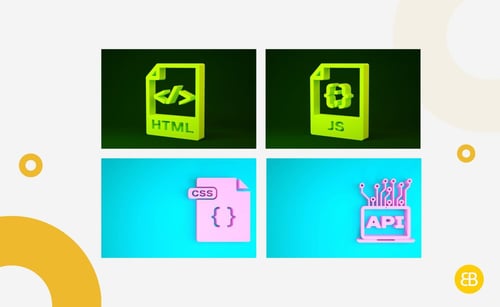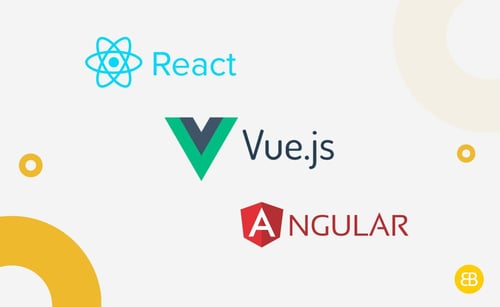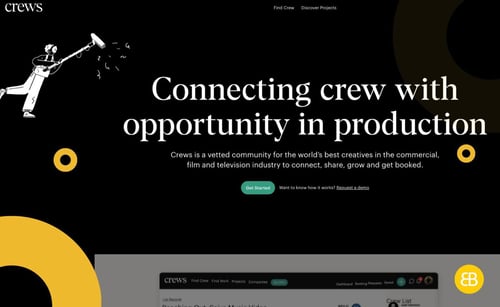Table of Contents
Are you looking for the best ways to take your online presence and website to the next level? Or maybe you just need a helping hand for navigating front-end development best practices.
In this article, we’ll be discussing everything related to front-end website development — from common beginner mistakes all the way down to essential tips and tricks from experienced developers.
Front-End Development Overview
What is Front-End Development?
Front-end web development revolves around creating the user interfaces (UI) of websites and web apps. This includes most of what the end-user sees and interacts with, including buttons, forms, and media content. In other words, front-end developers create user interfaces (UI), which are the graphical layout of an application that determines the looks and functionality of each element on that website or web application.
Generally speaking, creating such interfaces requires a strong knowledge of HTML (Hypertext Markup Language), CSS (Cascading Style Sheets), and JavaScript — programming languages used for building web pages and even simple web applications.
As a front-end web developer, besides creating the UI elements, you need to make sure that the website performs as expected on different devices to avoid having users leave the website because of technical issues, which can include increased page load time, lack of responsive design, and so on.
Imagine going on a website and having to wait several seconds (or even minutes!) for it to load. That will probably drive you away for good — and the same goes for your website visitors. In fact, the bounce rate tends to increase by 32% when the page load time goes from 1 second to 3 seconds.
What’s The Difference Between Front-End And Back-End Development?
Back-end development focuses on the “behind-the-scenes” elements of a website, handling aspects such as data storage, website performance, security, and server-side concerns.
While backend development looks at the logic and functionality of a website, front-end development focuses on how users interact with the website’s static and dynamic webpage elements like buttons, images, forms, and pop-ups.
Front-End Programming Languages
Anyone working with web development frameworks when creating a website, would use the following primary front-end programming languages:
HTML (Hypertext Markup Language)
HTML is mainly used to structure and format the content of a webpage, and it represents the skeleton or markup of your website.
CSS (Cascading Style Sheets)
CSS is used to describe how elements are supposed to be rendered on a device, focusing on the layout, styles, and appearance of a webpage.
JavaScript
JavaScript (JS) is the programming language used to create interactive and dynamic elements on a webpage, such as animations, pop-ups, and user input validation.

Popular Front-End Frameworks
In addition to the core programming languages mentioned above, there are also many libraries and frameworks available that aim to provide additional functionality on top of the foundation built with HTML, CSS, and JS.
Some of the most commonly used frameworks nowadays are React, Angular, and Vue.js. These frameworks enable any front-end developer to create more complex websites and web apps while requiring less coding effort.

The truth is that front-end development has evolved over time from just HTML and CSS to modern platforms like React, Vue.js, and Angular, with the front-end environment now being an API-headless environment.
Most of the work is based on the API and using these modern technologies has made the front-end experience much smoother for developers and more sophisticated than before in terms of functionality.
At EB Pearls, our team has tapped into these technologies and built powerful systems and layouts that meet industry standards set by well-established tech companies including Airbnb, Twitch, and Netflix. One great example is our project for Crews, which involves using the Next.js framework to build complex interfaces faster while being cost-efficient.

Common Front-End Development Issues
Below are some examples of common front-end development issues that developers need to consider and address when creating a website or web application.
- Browser compatibility — making sure the website looks and functions as expected in different browsers (e.g., Chrome, Firefox, Safari, and Microsoft Edge);
- User experience — ensuring a positive user experience, making the website intuitive and easy to use by focusing on navigation, interactivity, and rendering capabilities;
- Responsiveness — ensuring that websites are responsive and can adapt to different devices, screen sizes, and resolutions;
- Accessibility – making the website accessible to all users, including website visitors who use assistive technologies like screen readers.

Front-End Development Tips & Tricks
Focus On Responsive Design
Responsive design allows you to build websites that adapt to various screen ratios, sizes, and resolutions. Focusing on this positively impacts the user experience, search engine rankings, and website maintenance costs while future-proofing the website as new technologies emerge.
Always Test For Cross-Browser Compatibility
Cross-browser compatibility testing is necessary since web browsers can interpret website code differently. Testing browser compatibility ensures that a website looks and works as expected across various browsers. During testing, you can uncover compatibility issues such as layout and styling inconsistencies, functionality errors, and performance problems.
Make Sure Your Code Is Clean
One thing that all developers should strive for is clean and well-organized code — making it easier to read and maintain in the long run. A few tips for writing clean code include choosing meaningful variable names, leaving comments wherever necessary, and using design patterns to better structure your codebase.
Optimise Your Images
Optimising website images and media content is a must for several reasons. By optimising these files, you can reduce file size which makes them load faster, improving the performance of your website. Additionally, optimized images and media content can positively impact search engine rankings, reduce bandwidth usage, provide a better user experience, and increase accessibility for your website visitors.
Make Use Of Version Control
Version control is essential for any developer working on a project with other team members because it allows them to keep track of individual changes made to the codebase, as well as enabling them to access previous versions whenever necessary. Moreover, using certain tools also allows developers to automate the process of building, testing, and deploying code changes, which reduces the risk of human error and streamlines the development process. As for version control tools, it is safe to say that Git is the most popular version control system used by developers today.
Keep Up With The Latest Technologies
Staying up-to-date with front-end development trends is crucial since new technologies provide new ways of creating engaging user interfaces, improving the website or application performance, enhancing cross-platform compatibility, and helping meet the latest security standards and best practices.
Don’t Be Afraid To Experiment
One of the best things about front-end development is that there are a ton of different libraries, frameworks, and technologies to choose from. New trends are always emerging, so don’t be afraid to experiment with different technologies and frameworks to find the ones that work best for your project!
Last Thoughts on Front-End Development
In conclusion, front-end development entails more than just designing and developing beautiful user interface elements. It is equally important to ensure that the website performs optimally across various devices, so as to prevent technical issues that may turn users to your competitors instead.
At EB Pearls, we understand the importance of staying on top of the latest front-end development trends and best practices. We prioritize user experience and interactivity, ensuring that our development work goes beyond just making the final product look like the design. Our experienced team focuses on creating positive and conversion-oriented user experiences.
Contact us today to get started on your next web development project!

Michael leads the UX/UI team at EB Pearls, bringing 30+ years of experience in interaction design and crafting digital products for Fortune 50 companies.
Read more Articles by this Author
